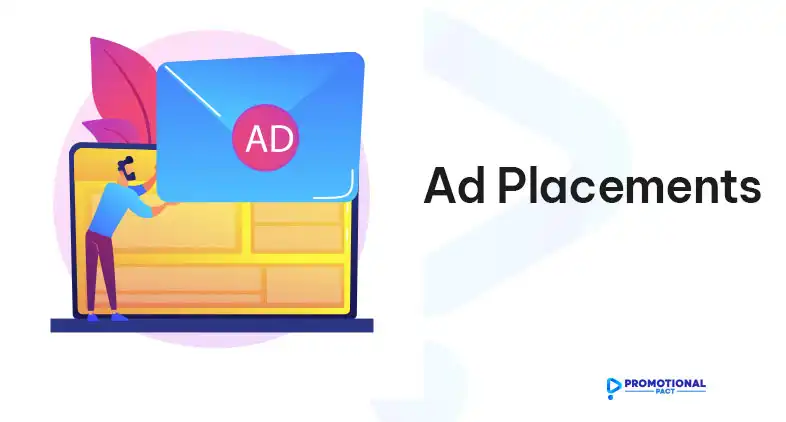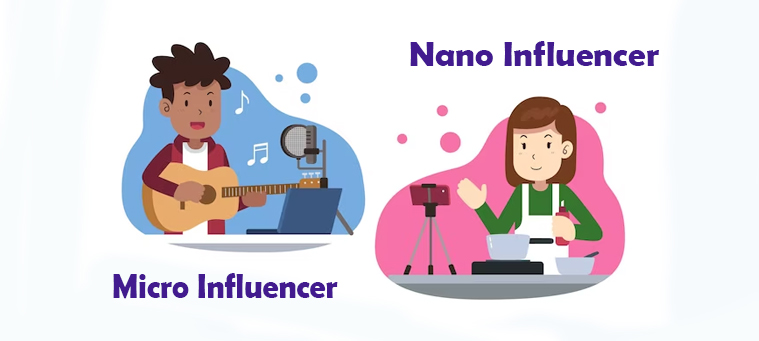These days, when digital advertisements have become more common than ever, businesses of all sizes grapple with the question: Are ad placements worth it? The short answer is yes, but with a crucial caveat – only when done strategically and with a clear understanding of your goals. In this article, we’ll explain different types of ad placements and formats as well as how you can utilize them successfully to make your ad placements worth it. Let’s begin.

Establishing Your Goal for Ad Placement Success
Before getting into the world of ad placements, it’s crucial to establish clear, measurable objectives. These goals will serve as your North Star, guiding every decision you make in your advertising journey.
Common objectives for ad campaigns include:
- Increasing visibility and recognition of your brand among your target audience.
- Acquiring potential customers through forms, email sign-ups, or other capture methods.
- Driving direct purchases or conversions.
- Increasing visitors to your website.
- Encouraging user interaction with your brand (likes, shares, comments).
To set effective goals, use the SMART framework: Specific, Measurable, Achievable, Relevant, and Time-bound. For instance, instead of aiming to “increase brand awareness,” set a goal to “increase brand recall by 20% among our target demographic within six months through social media ad placements.”
Types of Ad Placements and Platforms
The digital advertising landscape offers a myriad of options for ad placements. Each platform and ad type has its unique strengths and weaknesses, making it crucial to choose wisely based on your goals and target audience.

Display Ads
Display ads are visual advertisements that appear on websites, apps, and social media platforms. They come in various formats, including banner ads, interstitials, and rich media ads.
Pros:
- High visibility
- Visual appeal
- Broad reach
Cons:
- Banner blindness
- Lower click-through rates compared to other formats
Average Cost: $0.50 – $4 per thousand impressions (CPM)
Search Ads
Search ads appear on search engine results pages (SERPs) when users search for specific keywords related to your business.
Pros:
- High intent audience
- Immediate visibility for relevant searches
- Measurable results
Cons:
- Can be expensive for competitive keywords
- Limited visual appeal
Average Cost: $1 – $2 per click for Google Ads (varies widely by industry)
Social Media Ads
Social media platforms like Facebook, Instagram, LinkedIn, and TikTok offer highly targeted advertising options.
Pros:
- Advanced targeting capabilities
- Various ad formats (image, video, carousel)
- Potential for high engagement
Cons:
- Ad fatigue can occur quickly
- Platform-specific limitations
Average Cost: $0.50 – $2 per click on Facebook (varies by platform and targeting)
Different Types of Ad Placement Formats
The format of your ad can significantly impact its effectiveness. Here’s a brief overview of popular ad formats:
- Image Ads: Static visuals that can quickly convey a message.
- Video Ads: Engaging, dynamic content that can tell a story.
- Native Ads: Advertisements that blend seamlessly with the platform’s content.
- Text Ads: Simple, straightforward ads often used in search advertising.
When choosing an ad format, consider your campaign objectives, target audience preferences, and the strengths of each platform. For instance, if you’re targeting professionals on LinkedIn, a well-crafted text ad or sponsored content piece might be more effective than a flashy video ad.
Targeting and Audience Segmentation for Successful Ad Placement
The success of your ad placements heavily relies on reaching the right audience. Modern advertising platforms offer sophisticated targeting options that allow you to narrow down your audience based on demographics, interests, behaviors, and more.
For example, Facebook’s targeting options include:
- Age, gender, and location
- Interests and hobbies
- Job titles and education level
- Purchase behaviors
- Device usage
To maximize targeting effectiveness, start by developing detailed buyer personas that capture your ideal customers’ traits and behaviors. Leverage platform-specific targeting options to reach these personas precisely. Implement retargeting strategies to re-engage past visitors, keeping your brand top-of-mind.
Continuously refine your targeting approach based on campaign performance data, adjusting parameters to improve results over time. This ongoing process ensures your ads reach the right audience at the right time, increasing the likelihood of conversions and maximizing your ad spend efficiency.
Budgeting and Bidding Strategies for Maximizing Ad Placement ROI
Setting an appropriate budget and employing effective bidding strategies are crucial for maximizing your ad placement ROI. Start by allocating your budget across different platforms based on their potential to reach your target audience and achieve your goals.
Common Bidding Strategies
- Cost-per-Click (CPC): You pay each time someone clicks on your ad.
- Cost-per-Mille (CPM): You pay for every thousand impressions your ad receives.
- Cost-per-Action (CPA): You pay when a specific action (e.g., purchase, sign-up) is completed.
Choose a bidding strategy that aligns with your campaign objectives. For brand awareness, CPM might be more suitable, while CPC or CPA could be better for lead generation or sales-focused campaigns.
Measuring and Optimizing Ad Placements
To determine if your ad placements are truly worth it, you need to track and analyze key performance indicators (KPIs). Here’s a table of essential metrics to monitor:
| Metric | Description | Benchmark |
| Click-Through Rate (CTR) | Percentage of people who click on your ad after seeing it | 0.90% (Google Ads average) |
| Conversion Rate | Percentage of clicks that result in desired actions | 3.75% (Google Ads average) |
| Cost per Conversion | Average cost to acquire a conversion | Varies by industry |
| Return on Ad Spend (ROAS) | Revenue generated for every dollar spent on advertising | 2:1 or higher is generally good |
Remember, these benchmarks can vary significantly by industry, platform, and campaign type. Always compare your performance against your own historical data and industry-specific benchmarks.
Optimizing Ad Placements
Optimization is a continuous process of fine-tuning your ad campaigns. It involves A/B testing different ad elements to identify what resonates best with your audience. Utilize ad rotation features to prioritize high-performing ads. Adjust bids based on factors like device type and location to maximize efficiency.
Regularly refine your audience targeting using performance data insights. Optimize ad schedules to display your ads when your audience is most likely to convert. This ongoing refinement ensures your campaigns remain effective and cost-efficient in the ever-changing digital advertising landscape.
Frequently Asked Questions
Is paying for ads worth it?
Paying for ads can be highly worthwhile when done strategically. Paid advertising offers precise targeting, measurable results, and the ability to reach a large audience quickly. However, its value depends on your goals, budget, and execution. For many businesses, especially those looking to grow rapidly or enter new markets, paid ads provide a scalable way to acquire customers and build brand awareness.
Which Facebook ad placement is best?
There’s no one-size-fits-all answer, as the best placement depends on your specific goals and audience. However, Facebook’s feed ads often perform well due to their native appearance and high visibility. For e-commerce businesses, Instagram feed and story ads can be particularly effective. It’s recommended to start with Automatic Placements and then refine based on performance data.
How much does ad placement cost?
Ad placement costs vary widely depending on the platform, industry, and competition. On average, Facebook ads might cost $0.50-$2.00 per click, while Google Ads can range from $1-$2 per click for search ads. Display ads typically cost $0.50-$4 per thousand impressions. Remember, these are averages, and costs can be significantly higher in competitive industries.
Final Words
So, are ad placements worth it? The answer lies in your approach. When executed with clear goals, strategic planning, and continuous optimization, ad placements can be a powerful tool for driving business growth. They offer unparalleled reach, precise targeting, and measurable results that few other marketing channels can match.
However, success doesn’t come overnight. It requires a commitment to learning, testing, and refining your approach. Start small, focus on understanding your audience, and don’t be afraid to experiment with different platforms and ad formats.

